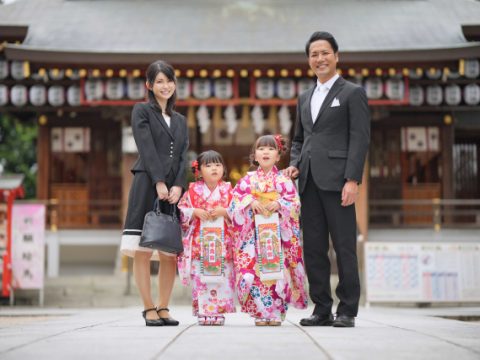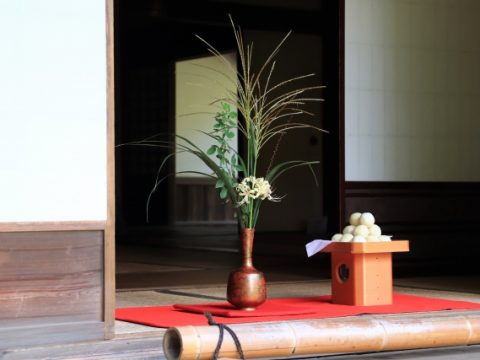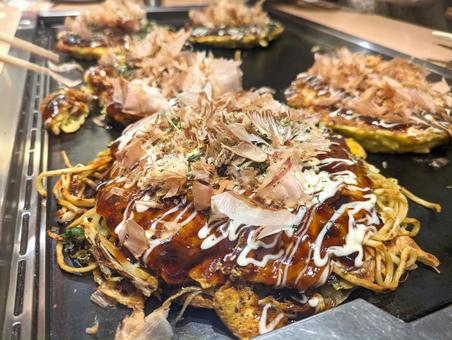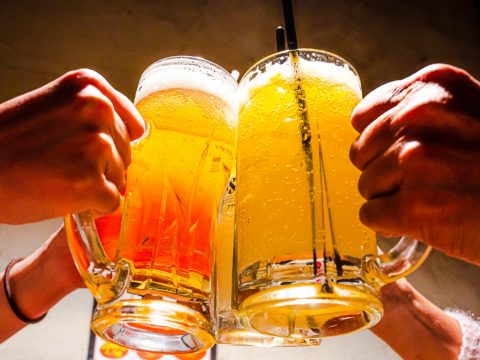Nanakusa Gayu (七草粥)
JAPANESE FOODS
09.01.2024

“七草がゆ” (Nanakusa Gayu) is a traditional Japanese dish associated with the celebration of “Jinjitsu no Sekku (人日の節句)” or “Nanakusa no Sekku (七草の節句)” that takes place on January 7th. “Sekku” (節句) is a term in Japanese that refers to traditional seasonal festivals or celebrations, often associated with specific times of the year. These festivals have been observed for centuries and are deeply rooted in Japanese culture. There are five Sekku throughout the year, each with its own customs, rituals, and significance. We have articles explaining the two major Sekku which are widely celebrated in Japan. Click the names below to see the articles.
- Jyoushi no sekku (上巳の節句). It is also known as Momo no sekku (桃の節句) or Hinamatsuri (ひな祭り).
- Tango no sekku (端午の節句). It is also known as Shoubu no sekku (菖蒲の節句) or Kodomono hi (子供の日).

What is Jinjitsu no sekku?
The festival is held on the seventh day of the first lunar month, which corresponds to January 7th in the modern calendar. The origin of the festival can be traced back to ancient China. On the seventh day of the New Year celebration, the Chinese warded off harmful spirits and illnesses and ensured good health for the year. On this day, people engaged in various rituals and consumed soup cooked with seven kinds of herbs.
In Japan, There was a tradition called “Wakana Tsumi”, where people picked young herbs at the beginning of the year to receive new life from nature. When the Chinese New Year custom was introduced to Japan in the Nara period (710-794), the tradition of Wakana-tsumi was combined with the Seven Spring Herbs which led to the current tradition of eating Nanakusa-gayu.
What herbs are used in the dish?
The seven herbs used in Nanakusa Gayu are believed to have medicinal properties and are associated with the promotion of good health. It is also considered to help in recovering from the cold winter months and provide racked nutrients.
The herbs used in Nanakusa Gayu are the following.
- Water dropwort (せり – seri) – Pleasant fragrance, and it is expected to stimulate appetite
- Shepherd’s purse (なずな – nazuna) – Also known as “penpen-sou,” it is said to have detoxifying effects.
- Jersey cudweed (ごぎょう – gogyo) – Also known as “Hahakogusa,” it is believed to alleviate sore throats and coughs.
- Common chickweed (はこべら – hakobera) – Rich in vitamins, it is said to be good for preventing cavities and as a pain reliever.
- Turnip (ほとけのざ – hotokenoza) – Rich in dietary fiber, it is said to be helpful in improving dermatitis.
- Daikon radish (すずな – suzuna) – Refers to turnips. It is said to promote digestion and have antipyretic effects
- Japanese parsley (えんでんすずしろ – enkairan) – Refers to daikon radish. It is said to promote digestion and be beneficial for preventing colds.

In the modern days, Nanakusa Gayu is also consumed to soothe the digestive system after consuming heavy foods, and for some people, consuming more alcoholic beverages during the year-end and New Year celebrations.
How can I get those herbs?
In early January, many grocery stores and supermarkets in Japan sell pre-packaged sets of the seven herbs specifically for making Nanakusa Gayu. If you cannot find them, you will be able to find the package online either fresh or freeze-dried to make the dish. If you can’t get the herbs in your country, I wonder if you can create the same kind of dish using medicinal herbs that are used in your own country. I hope you will have a healthy new year!


Eri Palmer
Eri grew up in Japan. She came to U.S. as an international student, and decided to stay in the country. Cooking is one of her passions, and she loves to cook Japanese food for her children.
Read previous articles by the writer
Read latest articles
KEYWORDS
- # PICKPICK
- # Resume
- # alcohol
- # Rice
- # Soup
- # winter food
- # Fast Food
- # seafood
- # spicy foods
- # raw food
- # fermented food
- # Transportation
- # MEAT
- # Edo culture
- # suits
- # clothing
- # drink
- # fish
- # seasoning
- # Japanese New Years Foods
- # Toshikoshi soba
- # Osechi Ryori
- # Ozoni
- # Christmas
- # Japanese fusion pasta
- # Wafu Pasta
- # Japanese Hot Pot
- # なべ
- # 鍋
- # Miyazaki
- # Chicken Nanban
- # Karamen
- # Autumn Wagashi
- # Mushi-yokan
- # Imo-yokan
- # Japanese Autumn Fruits
- # Autumn
- # Vending Machine
- # fall
- # dango
- # Chestnut rice
- # saury
- # Mushroom
- # Rice vinegar
- # Japanese condiments
- # 調味料
- # Sake
- # Mirin
- # Soy sauce
- # Japanese Noodles
- # Udon
- # Ramen
- # Yakisoba
- # Soba
- # Japanese Seaweed
- # 海藻
- # かいそう
- # Payslip
- # Training
- # Japanese summer foods
- # 和菓子
- # Wagashi
- # ryokucha
- # 夏
- # 飲み物
- # Ramune
- # ラムネ
- # Pokari Sweat
- # ポカリスエット
- # Calpis
- # カルピス
- # Mugicha
- # ume
- # 梅
- # うめ
- # umeshu
- # job hunting
- # tofu
- # Recruitment in Japan
- # miso
- # Japanese cuisine
- # Yellowtail and bonito
- # Children’s Day
- # Kashiwa Mochi
- # Chimaki
- # fruits
- # Kusamochi
- # Types of Agriculture in Japan
- # bread
- # パン
- # パン屋さん
- # japanese bread
- # shokupan
- # meal blead
- # anko bread
- # 桜
- # さくら
- # cherry blossom
- # visa
- # hanami
- # omotenashi
- # sakura
- # おもてなし
- # Japanese hospitality
- # oshibori
- # wet hand towel
- # hand towel
- # restaurant
- # Commuting in Japan
- # Women-only cars
- # Exit gate
- # japanese train
- # train
- # valentine
- # Japanese sweets
- # 朝食
- # Japanese Breakfast
- # Breakfast
- # Japanese
- # 日本
- # healthy
- # persimmons
- # hoshigaki
- # HR
- # work in Japan
- # jinji ido
- # corporate systems
- # Japanese work culture
- # bento
- # ekiben
- # shinkansen
- # omiyage
- # train station
- # Japanese culture
- # work culture
- # mentaiko
- # umeboshi
- # Japanese snacks
- # potato chips
- # Japanese potato chips
- # Japanese writing
- # seaweed
- # konbu
- # ocean foods
- # shio konbu
- # dashi
- # miso soup
- # food processing
- # pear
- # nashi
- # sweet potato
- # japanese sweet potato
- # stingray
- # satsuma imo
- # food value chain
- # homecooking
- # agriculture
- # Japanese homecooking
- # farming
- # nikujaga
- # shojin ryori
- # meat and potatoes
- # traditional foods
- # comfort food
- # buddhist food
- # manufacturing
- # factory
- # eihire
- # vegetarian
- # food and beverage
- # izakaya
- # yatai
- # japanese festival
- # taiyaki
- # matsuri
- # summer
- # Ikayaki
- # smart agriculture
- # shaved ice
- # kakigori
- # かき氷
- # summer dessert
- # Japan
- # Japanese foods
- # dessert
- # fruit
- # matcha
- # icecream
- # Pikcup
- # Pikc up
- # Pcikup
- # skilled labor visa
- # working visa japan
- # Dineer Table in Japan
- # Japanese manner
- # Japanese food
- # Japanese Table Manner
- # Chopsticks
- # Japanese traffic signs
- # traffic information
- # road rules in Japan
- # chocolate
- # green tea
- # Osaka
- # Work Japan
- # Japanese company
- # ikura
- # sushi
- # nigiri
- # wasabi
- # PCIK
- # PICK UP
- # PICK
- # PICKUP








